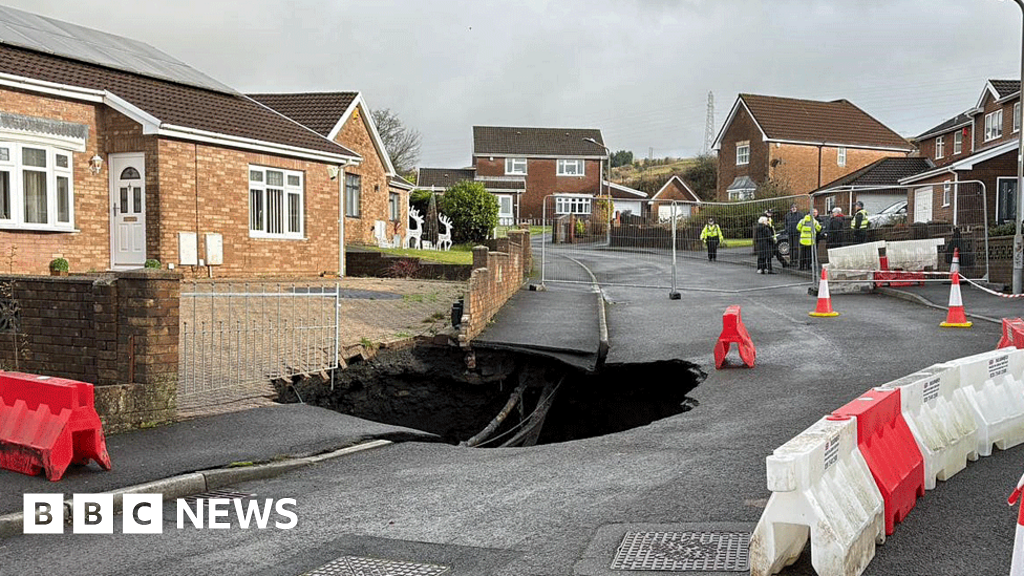jonnybellman
Active member

Sinkhole Merthyr Tydfil: Homes evacuated on Pant estate
About 30 homes are believed to have been evacuated and people were told to avoid the area.
Have we got ourselves a new cave?


Pit shaft? Crown hole?
Sinkhole Merthyr Tydfil: Homes evacuated on Pant estate
About 30 homes are believed to have been evacuated and people were told to avoid the area.www.bbc.com
Have we got ourselves a new cave?
An interesting two part account contributed by a Merthyr historian, including a picture of Pwll Morlais, an old karstic sink which had its water supply cut off long ago by a diversion to supply to the iron works below. The council now want to reduce the flow now culverted under much of Methyr - dare they consider reactivating this sink?
The Morlais Brook - Part 1
Part 2 starts at Cae Racca: this is where the ongoing 'sinkhole' collapse down to the culverted stream is
The Morlais Brook - part 2
It is interesting to note that nearly all those sinkholes in the Guardian article are not natural karstic features, but mostly collapses over infrastructure (sewers, culverts), old mines or tunnels, the Merthyr collapse being one example. Only the Turkish ones are true karstic sinkholes, in that case on gypsum. The Guatemala sinkholes are due to soil piping in unconsolidated volcanic deposits from leaking sewer pipes.Guardian feature: Sinkholes around the world – in pictures
After a sizeable sinkhole appeared on a sleepy street in south Wales, here are some of the more incredible views of the phenomenon from Greenwich to Guatemala
https://www.theguardian.com/world/g...world-from-greenwich-to-guatemala-in-pictures
According to the Guardian text, one of those holes is 150m deep! That's absolutely terrifying. To a non-geologist that sounds like more than leaking sewer pipes? Or is the report just inaccurate journalistic guff? I must admit the Guatemala City pictures look like the holes are impressively deep and sheer sided.The Guatemala sinkholes are due to soil piping in unconsolidated volcanic deposits from leaking sewer pipes.
Not inaccurate journalistic guff! See Waltham, T., 2008. Sinkhole hazard case histories in karst terrains. Quarterly Journal of Engineering Geology and Hydrogeology, 41(3), pp.291-300.According to the Guardian text, one of those holes is 150m deep! That's absolutely terrifying. To a non-geologist that sounds like more than leaking sewer pipes? Or is the report just inaccurate journalistic guff? I must admit the Guatemala City pictures look like the holes are impressively deep and sheer sided.
Thanks. Does anyone know what's down below (or even gone to have a look)? And how the hell do you deal with a 150m deep hole opening up in a city? Seems like a bit of concrete and rubble won't do it.Not inaccurate journalistic guff! See Waltham, T., 2008. Sinkhole hazard case histories in karst terrains. Quarterly Journal of Engineering Geology and Hydrogeology, 41(3), pp.291-300.
"The void that the Guatemala sinkhole collapsed into was created by soil piping, whereby seepage water had washed the fines out of the poorly consolidated sediment, progressively taking coarser material and eventually creating an open pipe that developed headwards towards its water input (a leaking sewer). Eventual failure of the undermined roof was an inevitable continuation of the piping process. No rock dissolution was involved, and it is therefore a pseudokarst feature. Comparable large piping failures and sinkhole collapses are well known in the loess lands of China."
I would be extremely wary of investigating any passages (assuming they were accessible) at the bottom of a deep shaft in unconsolidated weak sediment, especially one created by sediment being washed out by effluent from a leaking sewer... Imagine!! I suspect it got infilled pretty quick with anything the locals could lay their hands on; I would have back filled it with coarse material at the base, then progressive finer material going back up so as to let water through rather than forcing water elsewhere potentially causing another sinkhole. Foamed concrete is not always the best solution.Thanks. Does anyone know what's down below (or even gone to have a look)? And how the hell do you deal with a 150m deep hole opening up in a city? Seems like a bit of concrete and rubble won't do it.

It's in the garden at the back of the houses in the centre of this:Another sinkhole in South Wales!
